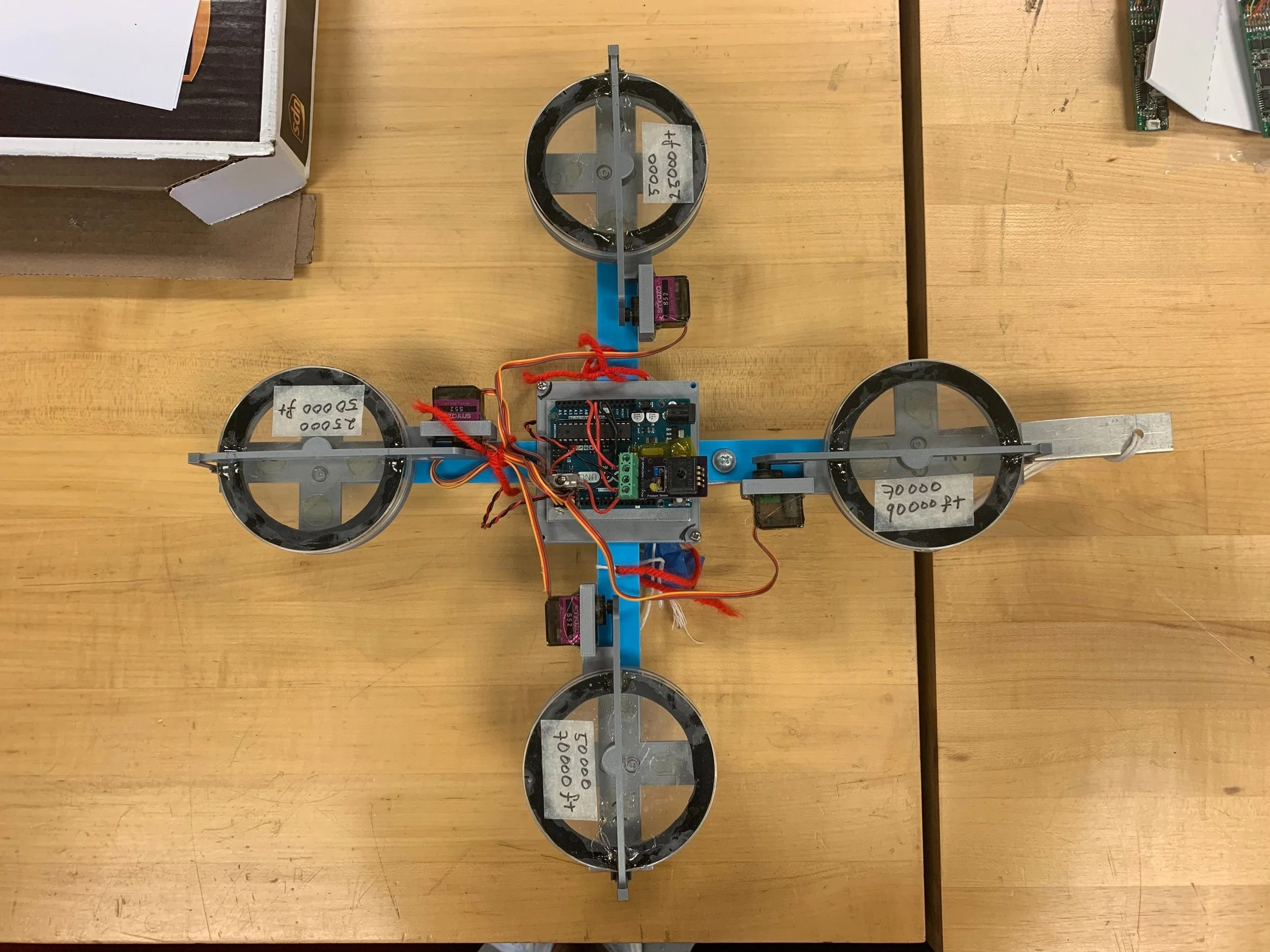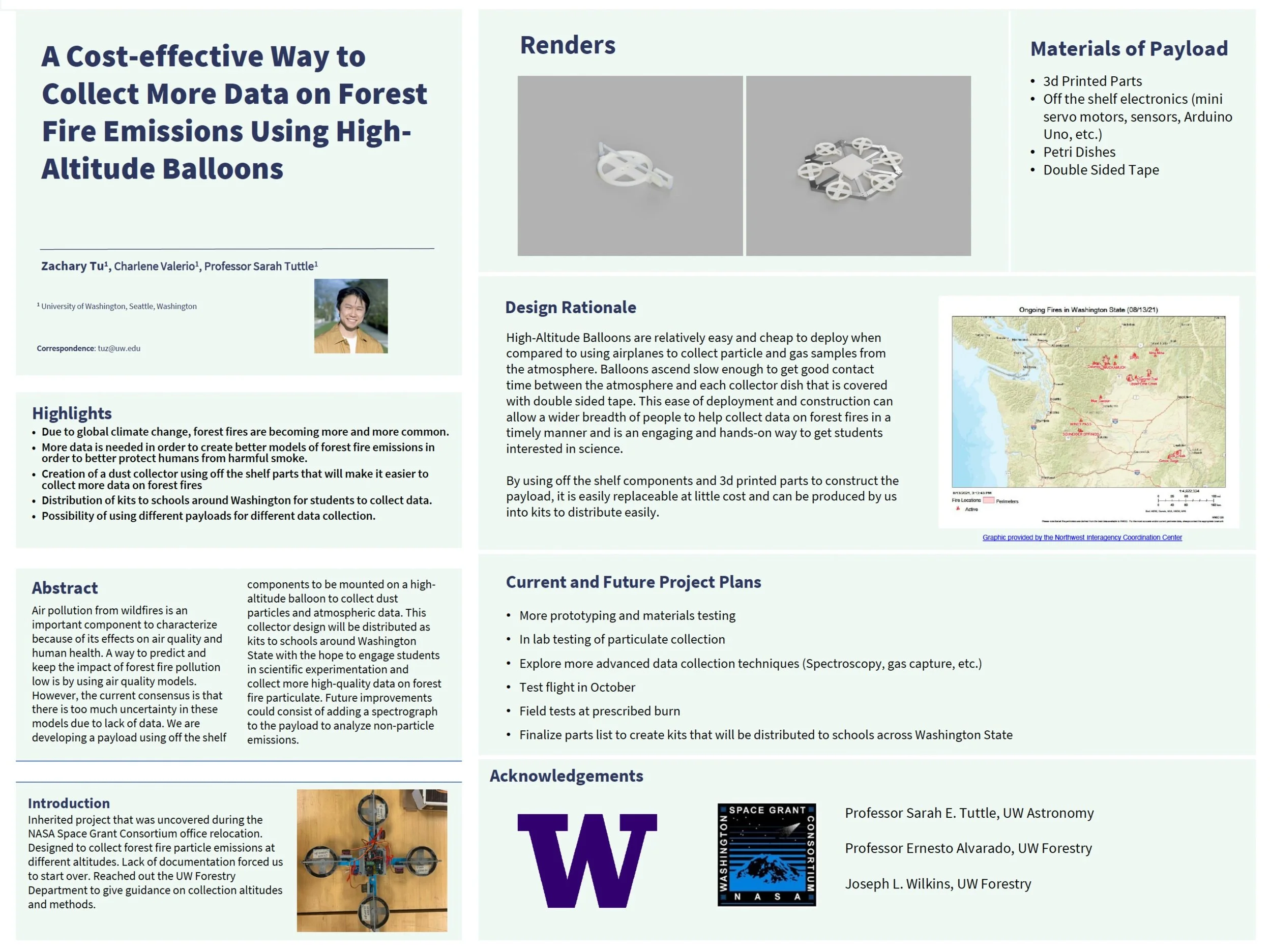Artifact 1
I worked on designing and testing a dust collector that will be connected on a high altitude balloon to study forest fires in the future. These are some photos of the prototype.
Artifact 2
Here is the poster that I presented and the symposium for the end of the program. Sadly, it was virtual and the platform they used was not the most intuitive.
Reflection
Over these past 20 months, the COVID-19 pandemic has drastically changed the lives of everyone in the world. As a student being forced into remote learning was not so bad, at first. As the months went on and the countless Zoom classes mounted, I became increasingly disheartened by it all. Life felt like it had halted and every day blurred together.
I began working with Professor Sarah Tuttle during February of last year, right before the pandemic really gained steam in the United States. I was supposed to help out in a limited capacity in her fiber lab, but lockdown began and those plans were dashed. I did what I could for Professor Tuttle, reading papers mostly in preparation for getting back into the lab. As the pandemic progressed, getting back to in-person learning and research felt more and more like a pipe dream. However, Professor Tuttle told me about the Washington NASA Space Grant Consortium’s Summer Undergraduate Research Program (SURP), where I would get paid and be able to help with research in person. I was more than excited to get out of my apartment and see people other than my roommates on a regular basis.
The program began in late June and my project was to improve on a forest fire dust collector that is supposed to be mounted on a high-altitude balloon, more in the Forestry domain than Physics or Astronomy. I needed to learn some new things pretty quickly, mainly about the physics of forest fire particulate dispersion, using CAD software, etc. Overall, things went smoothly and I was just happy to be able to work in person. Two other undergraduate students were involved, working on different projects but we were encouraged to collaborate. It felt really good to break the monotony of class and be able to work on something hands on that is different from my majors.
The largest thing these last nine weeks of being a SURP student taught me was time management. I was never the best at managing my time correctly, but the pressure of making and presenting a virtual poster at the end of these nine weeks made it clear to me that using my time properly was necessary. Collaboration was also another important aspect. I find that--in STEM at least--many of the students in my classes do not collaborate well with each other, even though in many classes we have to work together on worksheets or labs and the like. I feel that this manufactured collaboration is not an effective way for me to learn. However, during this program, I was the oldest student and I tried to help as much as I could when the other two undergraduates needed help or just asked me questions about what we were doing. I was also not afraid to ask them questions or try and find an answer together when none of us knew.
While the project I worked on was not something that I would want to pursue further academically or career-wise, the entire experience as a whole gave me greater insight into conducting research and I am excited to continue this project as well as pursuing other projects that are more in line with my majors. Even though COVID-19 still loomed over our heads during these last nine weeks, this program was probably the most I could have done with my summer to better prepare myself for graduate school and academia in general. While the future of in-person learning is still up in the air, I am glad I was able to get the opportunity to do in-person research over this summer.


